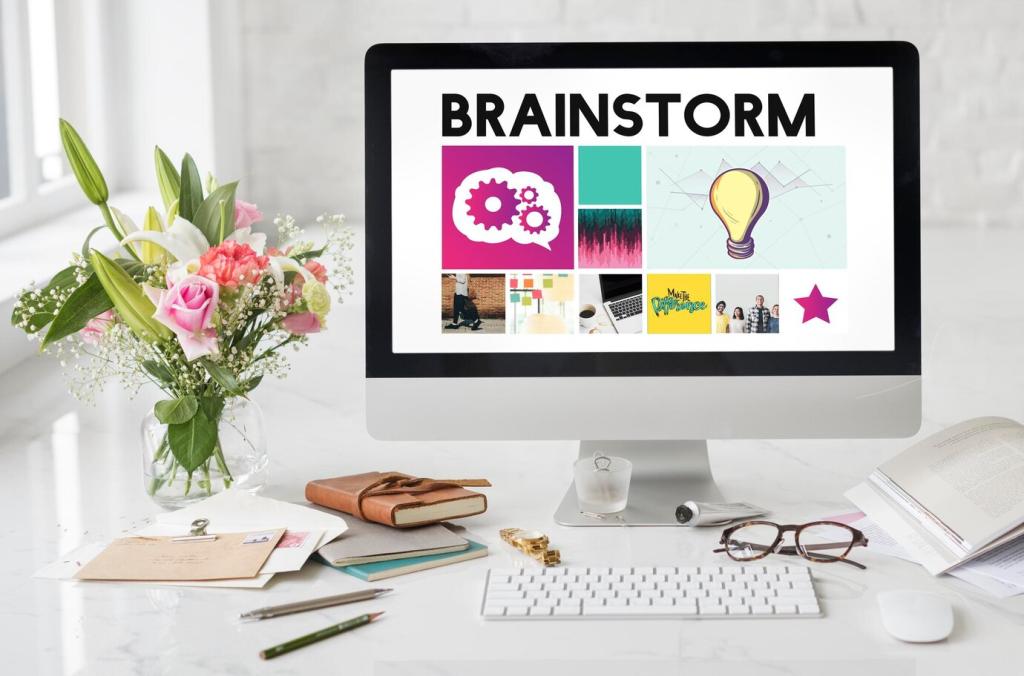Optimizing SEO for Interior Design Content
Selected theme: Optimizing SEO for Interior Design Content. Welcome, designers and design lovers—let’s turn your projects, palettes, and stories into pages that rank, attract dream clients, and feel as beautiful as your spaces. Subscribe, comment with your niche, and join our community shaping search-ready, style-forward interiors.
Keyword Research That Speaks the Language of Style
Mine client consultations, mood boards, and even Instagram DMs for recurring phrasing: “airy kitchen storage,” “small apartment bedroom,” “Japandi entryway ideas.” Match those terms with keyword tools, site search logs, and competitor gaps to build a content slate that mirrors how real people describe desired spaces.




Image SEO for Visually Led Designers
Write alt text that describes focal elements and intent: “sunlit Japandi living room with low oak media console, linen sofa, and sculptural floor lamp.” Avoid keyword stuffing; clarity wins. Anecdote: after rewriting alt text on a gallery, a studio saw Google Images become a top three traffic source in one month.
Name files meaningfully—no more IMG_2043. Use concise, style-forward slugs: japandi-living-room-oak-console.jpg. Compress with modern formats like WebP and AVIF where supported. Balance quality with speed; a swift, elegant site feels premium and reduces bounce, which often improves engagement metrics tied to better rankings.
Submit an image sitemap and write captions that add context, not fluff. A grounded caption—materials, maker references, or layout rationale—keeps readers engaged and improves semantic signals. Encourage readers to pin images they love, creating a quiet loop between Pinterest discovery and organic search visibility.
Local SEO for Studios and Independent Designers
Service Area and Neighborhood Pages
Create unique pages for core locations and neighborhoods, referencing architectural character, light conditions, and typical room sizes. Do not clone copy. Share micro-stories—like navigating a prewar building’s quirks—to build trust. A map, embedded projects, and locally relevant FAQs signal relevance and real-world presence.


Reputation and Reviews, Authentically Managed
Ask happy clients for specific reviews: mention spaces, timeline, and collaboration style. Reply to every review with warmth. Include snippets on your site with proper schema so search engines can reflect your reputation. A single heartfelt paragraph often says more than a dozen generic five-star ratings.
Content Architecture: Clusters, Pillars, and E‑E‑A‑T
Create comprehensive pages for kitchen design, living room refreshes, and full-home renovations. Outline process, timelines, and common decisions, then link to deep dives—countertops, lighting layers, and storage strategies. This architecture helps users navigate naturally while signaling topical authority to search engines.
Technical SEO Without the Jargon

Speed as Part of Aesthetic
Optimize images, pre-load critical fonts, and inline above-the-fold CSS. A fast site mirrors a designer’s eye for clean lines and restraint. Anecdote: a studio cut homepage size in half and saw longer dwell time, more inquiries, and a jump in rankings for their city plus service terms.

Structured Data for Creative Work
Add schema for Organization, LocalBusiness, Project, Article, FAQ, and Video where relevant. Structured data clarifies context—who you are, what you do, and why a page matters. Rich results often improve click-through rates, especially for visually compelling case studies and how-to explainers.

Indexation Hygiene and Clear Navigation
Maintain XML sitemaps, clean robot directives, and canonical tags to avoid duplicates. Keep navigation simple: Services, Portfolio, About, Journal, Contact. Remove thin tag pages and orphaned posts. Encourage readers to subscribe for monthly SEO-by-design tips tailored to studios, stylists, and boutique interior brands.
